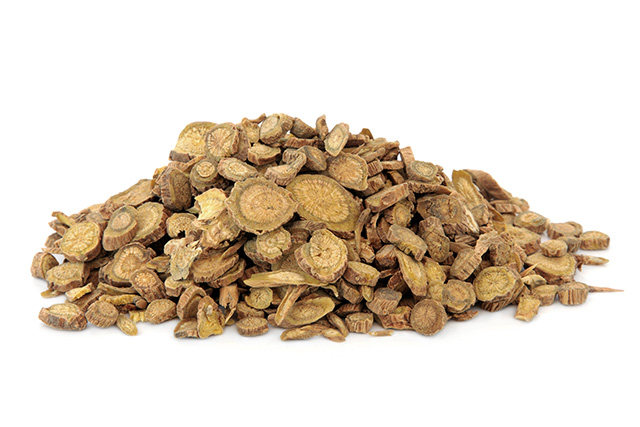Scutellaria Radix found to be a promising anti-cancer agent against non-small cell lung cancer
05/25/2020 / By Evangelyn Rodriguez

Scutellaria baicalensis, commonly known as Chinese skullcap, is a widely used medicinal plant that belongs to the mint (Lamiaceae) family. Since ancient times, its root has been used to make powerful decoctions or tinctures for various ailments, especially inflammatory diseases. Today, Chinese skullcap is one of the most well-known herbs associated with Traditional Chinese Medicine (TCM).
According to The Compendium of Materia Medica, the most authoritative book on TCM, Chinese skullcap is an effective treatment for diarrhea, dysentery, hemorrhage, hypertension, inflammation, insomnia and respiratory infections. Modern research has proven the veracity of these claims, and have also demonstrated the applicability of Chinese skullcap in the management of other diseases.
In a recent study, researchers at Kyung Hee University in South Korea showed that Chinese skullcap can be used for the treatment of non-small cell lung cancer (NSCLC), the most common type of lung cancer. Specifically, they found that the root of this herb (Scutellaria radix, SR) can exert its anti-cancer effect by inducing apoptosis and autophagy. They discussed their findings in an article published in The American Journal of Chinese Medicine.
Chinese skullcap can stop the progression of non-small cell lung cancer
For their study, the researchers used two NSCLC cell lines, namely, H358 and H2087 cells, which they treated with SR. They reported that this decreased the viability of cancer cells. Protein detection by Western blot showed that SR increased the expression of proteins involved in cell suicide (apoptosis), such as Bcl-2-associated X protein (Bax), cleaved-caspase 3 and cleaved-Poly ADP ribose polymerase (PARP).
On the other hand, when the researchers treated cancer cells with SR and Z-VAD, a caspase inhibitor, they found that the latter negated the anti-proliferative effect of SR. This suggested that one of the mechanisms of action of SR is the induction of apoptosis via activation of caspases. Caspases are enzymes that initiate the signaling cascade that eventually leads to programmed cell death.
Further experiments also revealed that autophagy is another cell-related event involved in SR’s mode of action. Autophagy refers to the process by which the body destroys and recycles damaged cells in order to build new and healthy ones. The researchers reported that SR treatment caused an increase in the ratio of autophagy-related proteins LC3-II and LC3-I in NSCLC cells, which suggested that SR treatment induces autophagy. In contrast, co-treatment with 3-methyladenine (3-MA), an inhibitor of autophagy, led to the loss of autophagy and the suppression of apoptosis.
Based on these results, the researchers concluded that the root of Chinese skullcap triggers apoptosis in non-small cell lung cancer via autophagy, making it a promising anti-cancer agent against NSCLC. (Related: Chinese skullcap herb found to kill ovarian cancer cells.)
Other medicinal uses of Chinese skullcap
The roots of Chinese skullcap are not its only medicinal parts. Even the leaves of this powerful herb are used traditionally in TCM and Native American medicine as a remedy for diarrhea and chronic pain. They are also potent sedatives and are used to treat anxiety and convulsions. Known in TCM as huang qin, Chinese skullcap is a vital ingredient in various herbal formulas, such as xiao chai hu tang, which is used for gastrointestinal issues and liver disease, and lung fu fang, which is used for bronchial pulmonary squamous cell carcinoma and NSCLC.
Here are some of the benefits offered by Chinese skullcap:
- Improves mood and reduces anxiety
- Has antibacterial and antiviral effects
- An excellent source of anti-inflammatory and anti-cancer compounds
- Has anti-convulsant effects
- Treats insomnia
- Protects against neurodegenerative diseases (e.g., Alzheimer’s disease, Parkinson’s disease)
- Boosts heart health
Chinese skullcap is a powerful herb with plenty of medicinal applications. However, it has been shown to interact with various medications, such as blood-thinners, cholesterol-lowering drugs and pain killers. To avoid any adverse effects, seek advice from a trusted TCM or natural health practitioner before using this herb or any supplement containing it.
Sources include:
Tagged Under: alternative medicine, cancer cures, cancer treatments, Chinese medicine, chinese skullcap, herbal medicine, Herbs, lung health, natural cures, natural medicine, non-small cell lung cancer, research
RECENT NEWS & ARTICLES
COPYRIGHT © 2017 RESEARCH NEWS



















